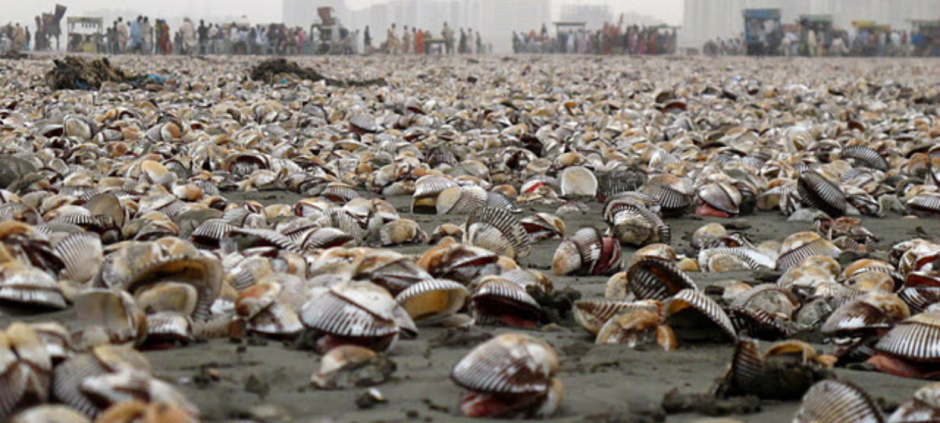A rare natural phenomenon stunned visitors at Karachi Beach this week, as millions of oysters appeared along the shoreline. The unexpected sight at Clifton Beach drew large crowds, with many people gathering to collect shells and take photos.
Eyewitnesses said the beach looked surreal, with the sand almost completely covered by oyster shells. Many of the oysters were still alive, their shells glistening under the sun.
According to marine experts, the event was likely caused by unusual wind patterns and strong tidal waves. Moazzam Khan, a Technical Advisor at WWF-Pakistan, said the shift in wind direction created powerful currents that dislodged the oysters from their natural seabed. These currents then pushed the oysters onto the Karachi Beach.
Khan clarified that while marine pollution can sometimes kill oysters, the fact that many were alive points to natural causes. “This was likely due to tidal activity, not pollution,” he explained.
He also mentioned that among the oysters were many blood clams—a type of bivalve mollusk. Both small and large oysters were found scattered across the beach, highlighting the scale of the event.
As temperatures rose, the washed-up oysters began to rot, creating a strong odor. In response, the Clifton Cantonment Board launched a cleanup operation using heavy machinery to clear the beach.
Oysters are marine creatures with hard shells. In several Asian countries, their meat is considered a delicacy. Some oysters can even produce pearls, although this is extremely rare.
While oyster shells are commonly seen on beaches around the world, it is unusual to find so many live oysters at once. The event at Karachi Beach was both fascinating and concerning, leaving experts and the public eager to understand more.
The rare oyster phenomenon at Karachi Beach comes at a time when Pakistan’s coastline is drawing increased attention. Recently, Gentry Beach unveiled a multi-billion dollar investment in Pakistan’s luxury real estate sector, signaling growing interest in the country’s prime coastal locations.










